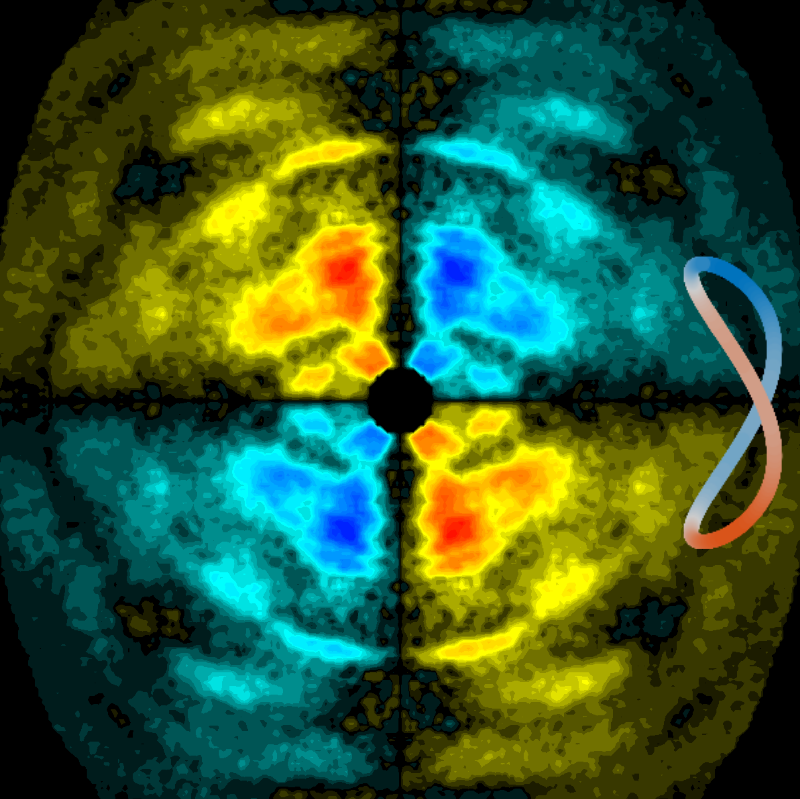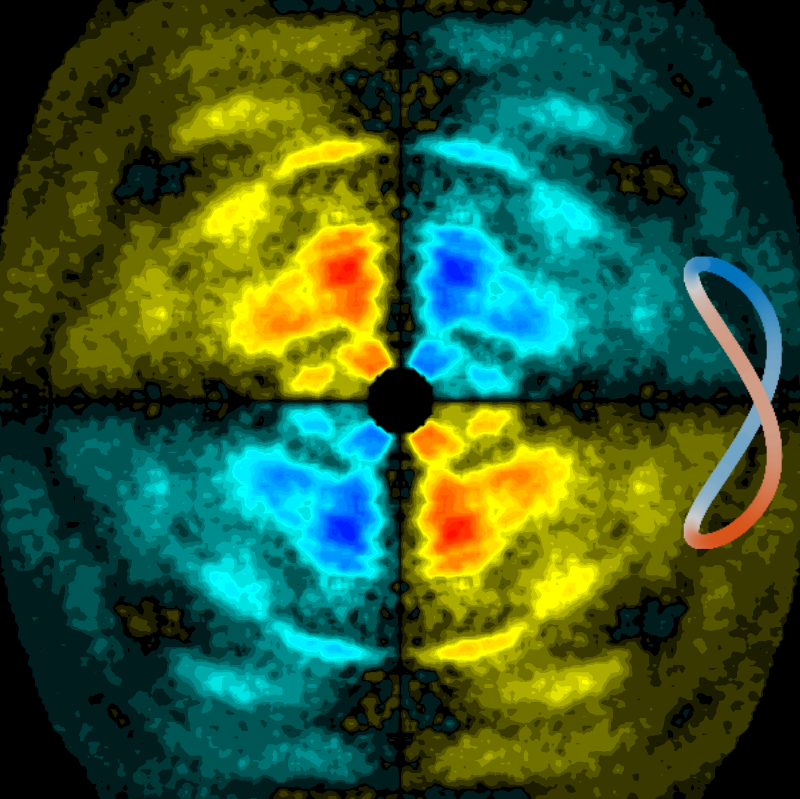Molecular Probe Uses a Polarization Flip
A common way to study molecules that come in left-handed and right-handed forms is to use light with circular polarization. Extending such techniques, a new experiment flips the polarization of a light pulse from clockwise to counterclockwise during the course of a single wave cycle. In a demonstration, researchers used this subcycle polarization control to take ultrafast snapshots of two types of handed, or “chiral,” molecules. The data reveal that the polarized-light-molecule interaction is extremely fast. The researchers expect that further work with this flip-flopping polarization technique could help them better understand the difference in reactivity between left-handed and right-handed molecules.
Left-handed and right-handed molecules are mirror images of each other, but their chemical behavior can be very different. The left-handed version of the drug ibuprofen, for example, is much more effective at relieving pain than the right-handed version. To understand the role that handedness plays in chemical reactions, researchers would like to see how chiral molecules behave on timescales as short as femtoseconds ( seconds) or attoseconds ( seconds). The ideal measurement produces a “chiral signature”—meaning the result for left-handed molecules is different from that for right-handed molecules, says Yann Mairesse from the French National Center for Scientific Research (CNRS) and the University of Bordeaux in France. He and his colleagues have identified a new type of chiral signature by tweaking the circular polarization of ultrashort pulses used to probe chiral molecules.
The researchers’ technique is based on photoelectron circular dichroism (PECD), which involves ionizing randomly-oriented molecules with a circularly polarized light pulse and detecting the escaping electrons. If the molecules being probed all have the same handedness, they produce an asymmetry in the directions of the emitted electrons. For example, for clockwise electric field rotation, more electrons might be emitted in the forward direction of the light beam than in the backward direction. Like a nut rotating on a bolt, the direction of motion is tied to the direction of rotation.
Following a recent theoretical proposal [1], Mairesse and colleagues produced a pulse whose polarization flipped from clockwise to counterclockwise within a single oscillation cycle. The projected electric field of the pulse traced out a figure 8, rather than a circle, and they could vary the precise shape of the 8. One might expect that the asymmetry in electron emission would disappear when probing with such a pulse, because the clockwise and counterclockwise polarizations would cause exactly opposite effects.
However, when the team tested these pulses on right- or left-handed versions of two organic molecules—fenchone and camphor—they observed an asymmetry in the emission having two components. The first component was a forward-backward asymmetry, as in the classic PECD case, while the second component was an up-down asymmetry that had never been seen before. This second component came from the way that the rotation of the electric field was tied to its vertical direction: As the field traced out the top loop of the figure 8 pattern, it pointed upward and rotated one way. But in the bottom loop, the field pointed downward and rotated the opposite way. No such up-down distinction occurs when the polarization is constant and traces out a circle.
The observed asymmetry demonstrated that once an electron has been ionized, its final direction is determined by only one half-cycle of the electromagnetic oscillation. By the time the next half of the cycle arrives with the reversed polarization, the electron has moved far enough away that the handedness of the molecule no longer affects the electron’s motion. So the effects of the two polarizations do not cancel each other out. “Our work shows that the rotation of the electric field in a few hundreds of attoseconds is able to imprint an asymmetric response in the photoionization of chiral molecules,” Mairesse says.
The subfemtosecond resolution offered by this technique can potentially probe fast changes in the electronic states of chiral molecules that occur during chemical reactions. This information may provide insights into the different reaction rates of left- and right-handed molecules.
“Exerting such a degree of management and control of the light source below the level of single cycles of the electric field is impressive and suggests exciting new avenues for fundamental investigations,” says chiral molecule researcher Ivan Powis of Nottingham University, UK. Olga Smirnova, an expert in attosecond spectroscopy from the Max Born Institute in Berlin says the experiment is a “beautiful” demonstration of a potential early-stage probe of electron escape dynamics.
This research is published in Physical Review X.
–Michael Schirber
Michael Schirber is a Corresponding Editor for Physics Magazine based in Lyon, France.
References
- P. V. Demekhin, A. N. Artemyev, A. Kastner, and T. Baumert, “Photoelectron circular dichroism with two overlapping laser pulses of carrier frequencies and linearly polarized in two mutually orthogonal directions,” Phys. Rev. Lett. 121, 253201 (2018).





